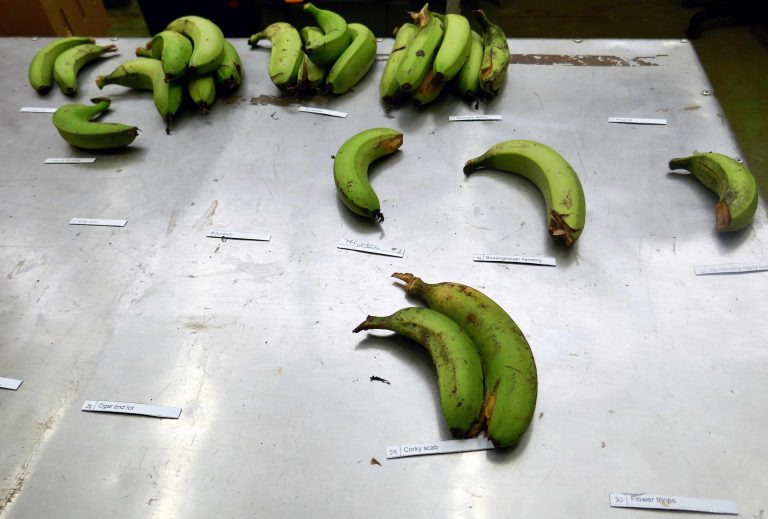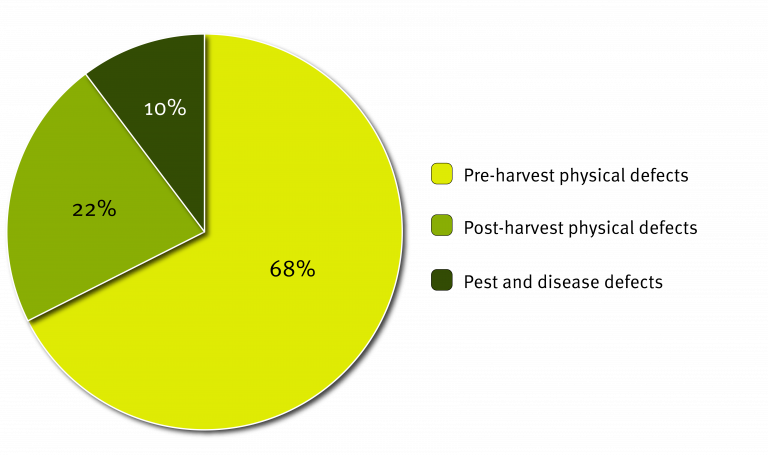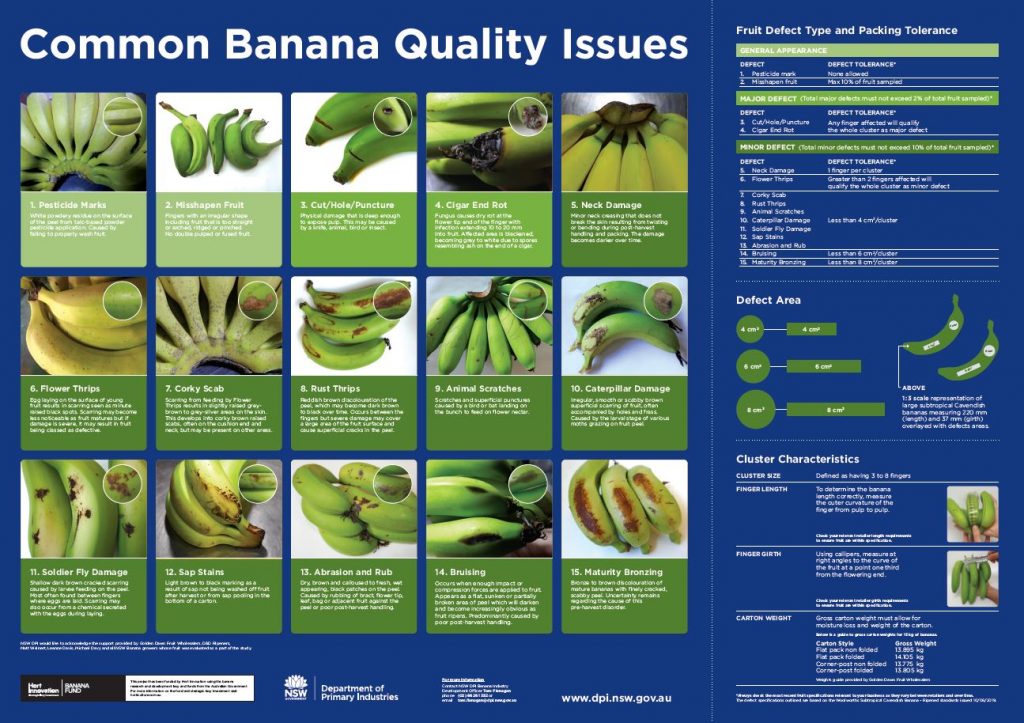What causes fruit to be rejected?
Subtropical banana reject analysis
Having less reject fruit, and consequently more marketable fruit, is a priority for many subtropical banana growers. To achieve this, the first step is to understand the causes of rejects before fruit leaves the farm gate. By identifying the main reasons for fruit rejection, we can focus our efforts on addressing the most common and impactful quality issues faced by growers.
About the study
In a study carried out in the subtropical growing regions of NSW and WA, reject fruit was collected from 16 NSW packing sheds and 6 WA growers. Fruit was assessed to determine why the grower had thrown them into the reject pile. Growers included in the study were located from Coffs Harbour in the south through to Tweed Heads in northern NSW and in Carnarvon in WA. Varieties assessed in the study included Cavendish, Lady Finger, Ducasse and Little Gem. This article will focus on the results for Cavendish and Lady Finger due to their dominance in the industry. A total of 3469 Cavendish and 1189 Lady Finger fruit that did not make the grade were evaluated over the course of the study between June 2018 and May 2019.

Reject fruit were assessed and separated into three general defect categories; Pre-harvest physical defects, pest and disease related defects and post-harvest physical defects. These three defect categories were further broken into 36 different defect types which are listed in the table below.
The results of this study, in addition to discussion with growers, will assist the industry in prioritising research, development and extension activities most beneficial for increasing fruit quality and profitability in subtropical growing regions.

Let's take a look at the results...
To begin with, let’s look at which defect categories the reject fruit fell into for both Cavendish and Lady Finger bananas. This will help us determine whether most of the fruit damage is occurring pre-harvest, post-harvest or as a result of pest and disease damage.
From the graph below we can see that for both Cavendish and Lady Finger most defects are associated with pre-harvest physical defects (68%), with post-harvest physical defects (22%) and pest and diseases defects (10%) following in that order. Based on this we can conclude that pre-harvest physical defects accounted for the majority of rejections and that concentrating resources on addressing these defects could result in the greatest gains.

The table below combines the reject data for both Cavendish and Lady Finger and ranks the 15 most prevalent defect types. Rows are colour coded to indicate which category the defect types fall under.

It must be noted that the high proportion of rejects resulting from misshapen fruit for both Cavendish and Lady Finger bananas is believed to be associated with the dry conditions experienced across the NSW growing regions during the study. Further reject analyses under ‘normal’ growing conditions or over a longer period would need to be undertaken to confirm this result.
Now let’s take a closer look at which defect types were most common for both Cavendish and Lady Finger bananas. By examining the results in more detail, we will be able to determine which of the defect types are responsible for the largest proportion of reject fruit. Growers are then able to use this list to focus their efforts on specific causes of defects that could offer the greatest reduction in rejects for the smallest effort or cost.

More information...
A poster is now available showing common quality issues and packing guidelines for subtropical banana growers. To receive a hard copy or for more information contact NSW DPI Industry Development Officer Tom Flanagan on (02) 6626 1352 or email tom.flanagan@dpi.nsw.gov.au

NSW DPI would like to acknowledge all growers who agreed to participate in the study, Matt Weinert, Leanne Davis from NSW DPI and Valerie Shrubb, Anastasia Van Blommestein and Brett Renton from WA DPIRD for undertaking the research.
This research has been funded as part of the Subtropical Banana Development and Extension Program (BA16007), which is funded by Hort Innovation, using the banana research and development levy and co-investment from the New South Wales Department of Primary Industries and WA Department of Primary Industries and Regional Development. Hort Innovation is the grower-owned, not-for-profit research and development corporation for Australian horticulture.



